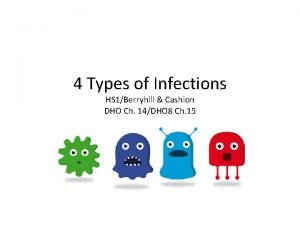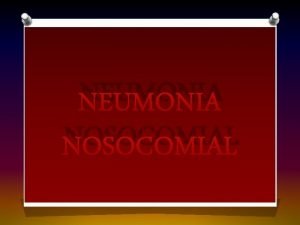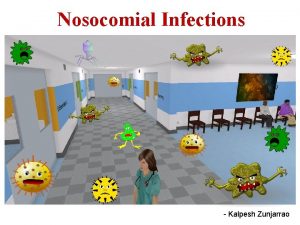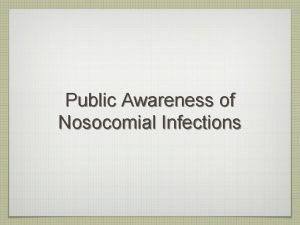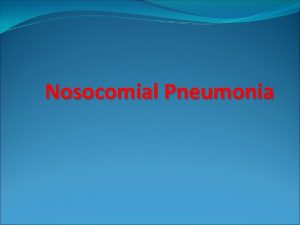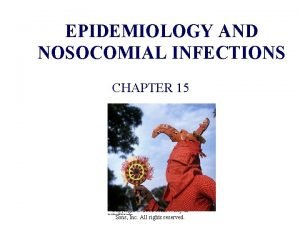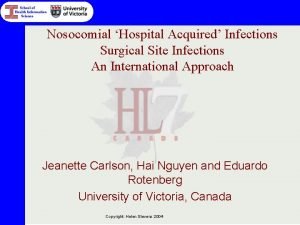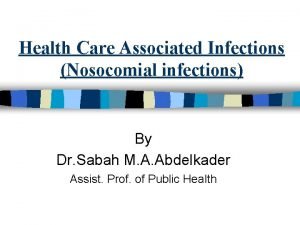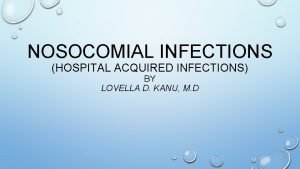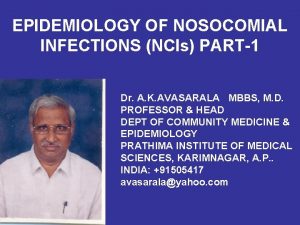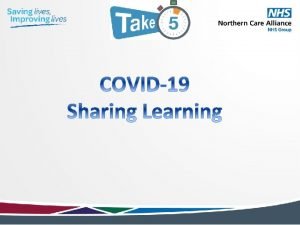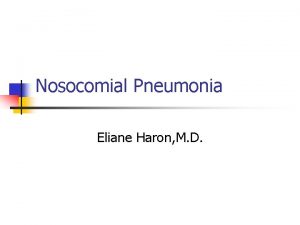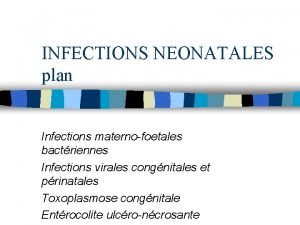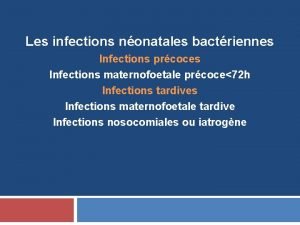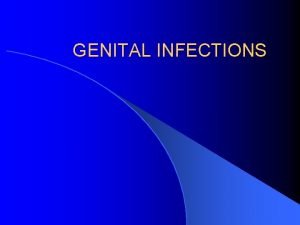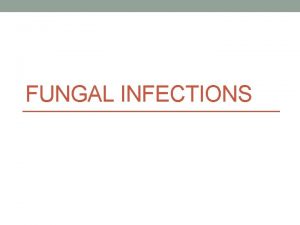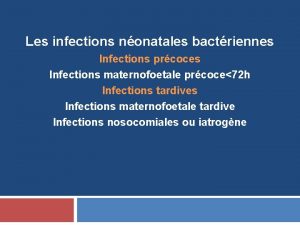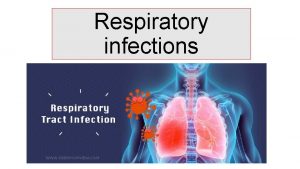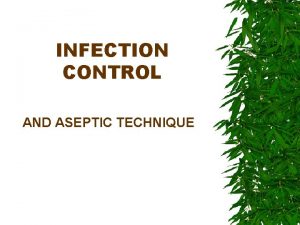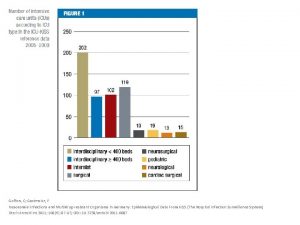EPIDEMIOLOGY AND NOSOCOMIAL INFECTIONS CHAPTER 15 1 What


































- Slides: 34

EPIDEMIOLOGY AND NOSOCOMIAL INFECTIONS CHAPTER 15 1

What is Epidemiology? 2

Table 33 -1 3

Epidemiology n What is Epidemiology? n Etiology n Incidence n Prevalence causation a/a+b 4

Epidemiological Terms n Morbidity n Mortality 5

Figure 33 -6 6

Diseases in Populations n Endemic n Pandemic n Epidemic n Sporadic 7

Figure 33 -2 8

Incidence Types 9

Disease Spread n Common Source Outbreak n Propagated Epidemic 10

Epidemiologic Studies n Descriptive n Analytical n Experimental 11

The Basic Triad Of Descriptive Epidemiology THE THREE ESSENTIAL CHARACTERISTICS OF DISEASE WE LOOK FOR IN DESCRIPTIVE EPIDEMIOLOGY: TIME n PLACE n PERSON n 12

Time n Changing or stable? n Seasonal variation. n Clustered (epidemic) or evenly distributed (endemic)? n Point source or propagated. 13

Place Geographically restricted or widespread (pandemic)? n Relation to water or food supply. n Multiple clusters or one? n 14

Person n Age n Socio-economic status n Gender n Ethnicity/Race n Behavior 15

The Basic Triad Of Analytic Epidemiology THE THREE PHENOMENA ASSESSED IN ANALYTIC EPIDEMIOLOGY ARE: HOST AGENT ENVIRONMENT 16

Agents n n n n Nutrients Poisons Allergens Radiation Physical trauma Microbes Psychological experiences 17

Host Factors Genetic endowment n Immunologic state n n Age n Personal behavior 18

Environment Crowding n Atmosphere n Modes of communication – phenomena in the environment that bring host and agent together, such as: n – Vector – Vehicle – Reservoir 19

Infection Reservoirs n Human n Animal n Non-living 20

Microbe Spread n Portals of Entry 21

Microbe Spread n Portals of Exit 22

Modes of Disease Transmission n Contact n Vehicles n Vectors 23

Problems in Disease Transmission Disease Cycles n Herd Immunity n 24

Controlling Disease Transmission n Biosafety 25

Public Health Organizations n Center for Disease Control (CDC) n World Health Organization (WHO) 26

Notifiable Diseases n Definition: n Nationally Notifiable Infectious Diseases 27

Nosocomial Infections n Sources 28

Nosocomial Infection Risks Susceptibility n Transmission n Universal Precautions n 29

Figure 33 -9 Other 17% Surgical site infections 22% Pneumonia 15% Bloodstream infections 14% Urinary tract infections 32% 30

Risks Equipment/Procedures n Sites of Infection n 31

Bioterrorism 32

Anthrax 33

Smallpox 34
 Ciliary escalator
Ciliary escalator Beth has a nosocomial infection. how did she get it?
Beth has a nosocomial infection. how did she get it? Chapter 25 sexually transmitted infections and hiv/aids
Chapter 25 sexually transmitted infections and hiv/aids Johnson and johnson botnet infections
Johnson and johnson botnet infections Bone and joint infections
Bone and joint infections Can methotrexate cause yeast infections
Can methotrexate cause yeast infections Retroviruses and opportunistic infections
Retroviruses and opportunistic infections Opportunistic infections
Opportunistic infections Opportunistic infections
Opportunistic infections Storch infections
Storch infections Storch infections
Storch infections Infections opportunistes digestives
Infections opportunistes digestives Bacterial vaginosis
Bacterial vaginosis Postpartum infections
Postpartum infections Genital infections
Genital infections Genital infections
Genital infections Classification of acute gingival infections
Classification of acute gingival infections Difference between descriptive and analytic epidemiology
Difference between descriptive and analytic epidemiology Define nutritional epidemiology
Define nutritional epidemiology Difference between descriptive and analytical epidemiology
Difference between descriptive and analytical epidemiology How to calculate incidence rate example
How to calculate incidence rate example Cbic recertification
Cbic recertification Descriptive epidemiology
Descriptive epidemiology Perbedaan or rr dan pr
Perbedaan or rr dan pr Logistic regression epidemiology
Logistic regression epidemiology How to calculate prevalence
How to calculate prevalence Descriptive vs analytical epidemiology
Descriptive vs analytical epidemiology Attack rate epidemiology formula
Attack rate epidemiology formula Bibliography of epidemiology
Bibliography of epidemiology Association vs causality
Association vs causality Formula for attack rate
Formula for attack rate Gate frame epidemiology
Gate frame epidemiology The wheel model of disease causation
The wheel model of disease causation Period prevalence vs point prevalence
Period prevalence vs point prevalence Defination of epidemiology
Defination of epidemiology

